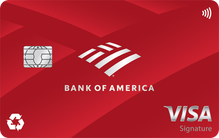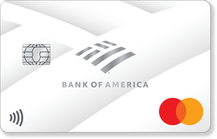Best balance transfer cards of April 2025
Advertiser Disclosure: Bankrate’s editorial team chooses and recommends the credit cards on this page. While we may receive compensation when users apply for cards through this page, our recommendations and card ratings are produced independently without influence by advertising partnerships with issuers.
Compare Bankrate's best 0% balance transfer credit cards
| Our picks for | Ongoing APR | ||
|---|---|---|---|
No-frills debt payoff | 21 months 0% intro APR for 21 months from account opening on qualifying balance transfers | Regular APR: 17.24%, 23.74%, or 28.99% Variable APR | |
Best for minimal fees | 21 months 0% for 21 months on Balance Transfers | Regular APR: 18.24% - 28.99% (Variable) | |
Encouraging payments | 18 months 0% intro for 18 months on Balance Transfers | Regular APR: 18.24% - 28.24% (Variable) | |
Dining | 15 months 0% Intro APR on Balance Transfers for 15 months | Regular APR: 18.99% - 28.49% Variable | |
Everyday spending | 15 months 0% on balance transfers for 15 months | Regular APR: 18.24%-29.24% Variable | |
Welcome offer | 18 months 0% for 18 months | Regular APR: 18.24% - 27.24% Variable APR | |
Excellent credit | 21 months 0% for 21 months on Balance Transfers | Regular APR: 17.24% - 27.99% (Variable) | |
Groceries | 12 months 0% on balance transfers for 12 months | Regular APR: 18.24%-29.24% Variable | |
Late fee forgiveness | 18 billing cycles Get our best balance transfer offer: 0% introductory APR on balance transfers for first 18 billing cycles after account opening. After that 18.24% - 28.24% variable APR based on your creditworthiness. | Regular APR: 18.24%, 20.24%, 23.24%, 26.24% or 28.24% variable APR based on your creditworthiness. | |
Flat-rate cash rewards | 12 months 0% intro APR for 12 months from account opening on qualifying balance transfers | Regular APR: 19.24%, 24.24%, or 29.24% Variable APR | |
Apply now on Bank of America's secure site | Customizable rewards | 15 billing cycles 0% Intro APR for 15 billing cycles for any BTs made in the first 60 days. A fee of 3% for 60 days from account opening, then 4% will apply. | Regular APR: 18.24% - 28.24% Variable APR on purchases and balance transfers |
Low interest | 15 months 0% intro APR for 15 months on balance transfers, then 11.15% to 25.15% variable regular APR | Regular APR: 11.15% to 25.15% variable | |
Low intro balance transfer fee | 18 billing cycles 0% Intro APR for 18 billing cycles for any BTs made in the first 60 days. A fee of 3% for 60 days from account opening, then 4% will apply. | Regular APR: 15.24% - 25.24% Variable APR on purchases and balance transfers | |
Credit union balance transfer card | 15 months 0% Balance Transfers Promo APR for 15 months | Regular APR: 17.99% Variable APR | |
U.S. Bank Shield™ Visa® Card | Long balance transfer intro APR | 24 billing cycles 0% introductory APR for the first 24 billing cycles for balances transferred within 60 days from account opening. After that, 17.74% to 28.74% based on your creditworthiness when you open your account. | Regular APR: 17.74% - 28.74% Variable |
Filter by
Showing 15 results
Balance transfer intro APR
0% intro APR for 21 months from account opening on qualifying balance transfers
Regular APR
17.24%, 23.74%, or 28.99% Variable APR
Rewards rate
N/A
Annual fee
$0
Why you'll like this: It pairs one of the longest intro APR offers on the market with a lower-than-average ongoing interest rate.
Balance transfer intro APR
0% for 21 months on Balance Transfers
Regular APR
18.24% - 28.99% (Variable)
Rewards rate
N/A
Annual fee
$0
Why you'll like this: It comes with one of the longest balance transfer offers on the market, and it’s one of the only cards that doesn’t charge late fees.
Balance transfer intro APR
0% intro for 18 months on Balance Transfers
Regular APR
18.24% - 28.24% (Variable)
Rewards rate
1% - 5%
Annual fee
$0
Why you'll like this: It boasts an intro APR on par with several top balance transfer cards, plus it rewards your purchases with 1 percent when you buy and another 1 percent when you pay.
Limited time offer
Earn $250 cash back
Balance transfer intro APR
0% Intro APR on Balance Transfers for 15 months
Regular APR
18.99% - 28.49% Variable
Rewards rate
1.5% - 5%
Annual fee
$0
Why you'll like this: Its exceptionally comprehensive reward categories can be a great tool for everyday spending alongside its intro APR offer.
Best for everyday spending
on American Express's secure site
See Rates & Fees, Terms ApplyBalance transfer intro APR
0% on balance transfers for 15 months
APR
18.24%-29.24% Variable
Rewards rate
1% - 3%
Annual fee
$0
Why you'll like this: It gives you a chance to pay off debt while making the most of your everyday purchases.
Balance transfer intro APR
0% for 18 months
Regular APR
18.24% - 27.24% Variable APR
Rewards rate
1% - 2%
Annual fee
$0
Why you'll like this: It offers great short- and long-term value thanks to its combo of a welcome offer, ongoing rewards and an intro APR.
Balance transfer intro APR
0% for 21 months on Balance Transfers
Regular APR
17.24% - 27.99% (Variable)
Rewards rate
N/A
Annual fee
$0
Why you'll like this: Its balance transfer intro APR is one of the longest if you want a streamlined card with features that benefit from an excellent credit score.
Best for groceries
on American Express's secure site
See Rates & Fees, Terms ApplyBalance transfer intro APR
0% on balance transfers for 12 months
APR
18.24%-29.24% Variable
Rewards rate
1% - 6%
Annual fee
$0 intro annual fee for the first year, then $95.
Why you'll like this: You can enjoy a best-in-class rewards rate on groceries as you pay off debt with its intro APR.
Balance transfer intro APR
Get our best balance transfer offer: 0% introductory APR on balance transfers for first 18 billing cycles after account opening. After that 18.24% - 28.24% variable APR based on your creditworthiness.
Regular APR
18.24%, 20.24%, 23.24%, 26.24% or 28.24% variable APR based on your creditworthiness.
Rewards rate
N/A
Annual fee
None
Why you'll like this: Your first late fee is refunded every 12 billing cycles, so it’s a safer choice if you’re worried about keeping up with payments.
Balance transfer intro APR
0% intro APR for 12 months from account opening on qualifying balance transfers
Regular APR
19.24%, 24.24%, or 29.24% Variable APR
Rewards rate
2%
Annual fee
$0
Why you'll like this: This is a well-rounded starter card with a decent intro APR offer, unlimited flat-rate rewards and no annual fee.
Best for customizable rewards
Cardholder rating
Balance transfer intro APR
0% Intro APR for 15 billing cycles for any BTs made in the first 60 days. A fee of 3% for 60 days from account opening, then 4% will apply.
Regular APR
18.24% - 28.24% Variable APR on purchases and balance transfers
Rewards rate
1% - 3%
Annual fee
$0
Why you'll like this: With its easy-to-earn bonus, solid intro APR offers and customizable rewards, it offers short- and long-term flexibility and value.
Balance transfer intro APR
0% intro APR for 15 months on balance transfers, then 11.15% to 25.15% variable regular APR
Regular APR
11.15% to 25.15% variable
Rewards rate
N/A
Annual fee
$0
Why you'll like this: You have a chance at a lower-than-average ongoing APR, which could help you save on interest even after your intro APR period ends.
Best for low intro balance transfer fee
Balance transfer intro APR
0% Intro APR for 18 billing cycles for any BTs made in the first 60 days. A fee of 3% for 60 days from account opening, then 4% will apply.
Regular APR
15.24% - 25.24% Variable APR on purchases and balance transfers
Rewards rate
N/A
Annual fee
$0
Why you'll like this: You can enjoy a solid intro APR on both purchases and balance transfers, a low transfer fee and a chance at lower-than-average ongoing APR.
Balance transfer intro APR
0% Balance Transfers Promo APR for 15 months
Regular APR
17.99% Variable APR
Rewards rate
N/A
Annual fee
$0
Why you'll like this: You can take advantage of one of the lowest ongoing APRs if you’re not sure you’ll qualify for the minimum rate of other balance transfer cards.
Best for long balance transfer intro APR

U.S. Bank Shield™ Visa® Card
Balance transfer intro APR
0% introductory APR for the first 24 billing cycles for balances transferred within 60 days from account opening. After that, 17.74% to 28.74% based on your creditworthiness when you open your account.
Regular APR
17.74% - 28.74% Variable
Rewards rate
4%
Annual fee
$0
Why you'll like this: It sets a new standard for balance transfer cards, offering an especially long intro APR period to help you pay down debt.
Remove a card to add another to compare
Remove a card to add another to compare
*The information about the Citi Custom Cash® Card has been collected independently by Bankrate.com. The card details have not been reviewed or approved by the card issuer.
































